We have done a few of these breaking down how to record your drums into its bits and pieces. Here another part is broken down for you audio enthusiasts, where we discuss recording hi-hat cymbals. To put things in perspective hi-hat cymbals is really not that hard to record, on most occasions your overhead stereo tracks should be more than enough to cover for these. Unfortunately, in some instances, they might be requiring some help especially if your drummer is pretty much skilled with speed and precision. These things tend to overturn your overhead stereo tracks thus dominating the entire track.
Read more here: http://en.audiofanzine.com/recording-mixing/editorial/articles/recording-drums-hi-hat-cymbals.html
Archives for June 2017
Syntronik By IK Multimedia
Syntronik, a new virtual synthesizer instrument was recently released by IK Multimedia. “The ultimate and best-sounding collection of vintage synthesizers to date” as described by IK, created with a new hybrid sample and modeling synthesis, Syntronik is sure to be a head-turner.
Oscillator level sampling plus IK’s so-called “DRIFT” technology to mention a few of its new features. Allowing movements as real as analogue oscillators do. To add up to these already incredible features are selectable filters within each included synthesizer that enable you te create your own mix and match combination. Even topped with powerful digital filters for modern timbral explorations.
Read more here: http://www.soundonsound.com/news/ik-announce-syntronik-virtual-synth-instrument
Home Studio Recording: Creating Pro Audio In 2019
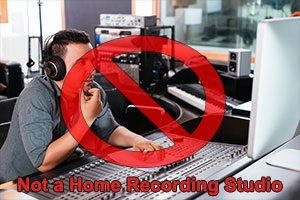 When folks hear the term “home studio” they often picture special rooms filled with expensive scary-looking equipment. But that is an outdated image. I’d like you to replace it with something else.
When folks hear the term “home studio” they often picture special rooms filled with expensive scary-looking equipment. But that is an outdated image. I’d like you to replace it with something else.
From now on, when you think of a home studio, I’d like you to picture your computer. There should also be some kind of microphone nearby. That’s it! In 2019, technology has advanced far enough to allow us to do amazing things.
In the “old days,” a home studio for audio production had to have certain pieces of hardware. And that hardware was usually large and expensive. For example, you had to have a mixer AND an audio recording unit. If you wanted to do multi-track recording, that mixer had to be a special kind of mixer that let you connect to that audio recorder in a certain way.
That is why so many people still envision mixing boards as part of home recording studios. But I actually caution AGAINST using a mixer. See my article Why You Should Not Use A Mixer In Your Home Recording Studio for more on that.
The Home Studio of 2019
All you really need besides a computer is something to plug a mic into. That something is an interface box, which connects to your computer via USB (or thunderbolt, etc.). These are usually small enough to fit in one hand! Some interface units – like the Shure X2U – are about the size of a lipstick tube. My interface of choice is a little red box called the Focusrite Scarlett.
So what should your vision of a home recording studio be now? Let’s try something like the picture below, a computer with a small interface box, and a microphone. There are headphones in this picture, but those aren’t out of place in any home computer setup. That’s it!
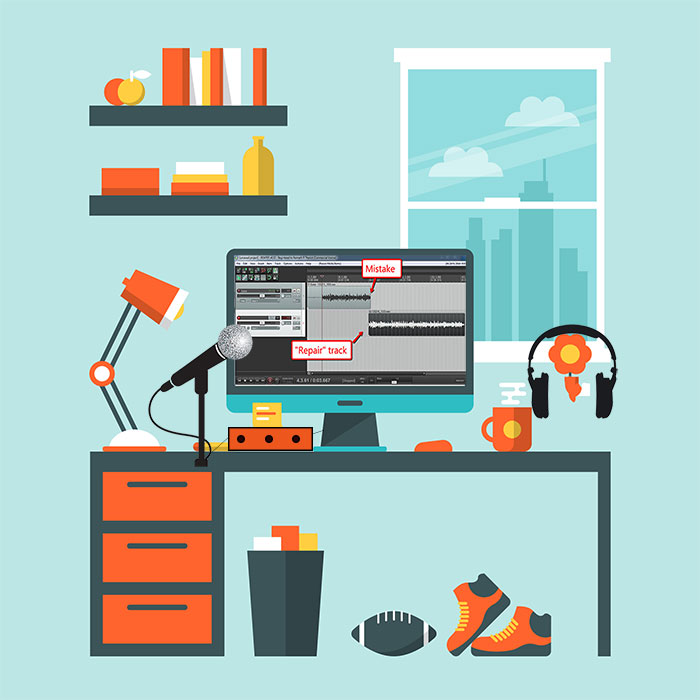
How Expensive Is the Gear In the 2019 Home Studio?
Technically, you can set up a home studio for about five bucks! That would include just a cheap “computer mic” (usually made of plastic) and free audio recording software. But if we’re being realistic, you’re probably not going to be able to record professional quality audio that way.
I would say that the minimum amount you’ll have to spend is about $54. I know! Crazy, right? That’s how much the Samson Q2U USB microphone costs. In my opinion, this is the most cost effective way to start recording good quality audio. And with a USB mic, you don’t need a separate interface box.
Is That All I Will Ever Need?
Depending on what you record in your home recording studio, then the $54 dollar studio may be all you need. For example, if you narrate videos, produce podcasts, and other basic voice-over recording, that may well be enough to make you sound professional.
But if you are a musician, you may want a bit more. If you want to do professional voice-overs, you may also want more, or better equipment.
The good news is that you can upgrade a little at a time. I am a huge fan of letting your need drive your purchases. Don’t just buy a piece of gear because it is supposed to be good, or because a sales person said you need one.
A few examples of how to upgrade would be to move to the microphone-and-interface setup I described earlier. This would involve a large diaphragm condenser microphone, which is a good all-around mic. An entry-level mic like this would be the Audio-Technica AT2020. And then you’d need an interface box to plug that into.
I have written a lot about gear to get started with an upgraded home studio. Check out my article series How To Build A Home Record Studio for more details on gear.
Also, here is a free guide I wrote that shows you how to get the best sounding audio in a poor room (most of us who record at home) – 6 Mostly Free For Making Your Audio Sound Expensive.

Advanced EQ Techniques
For those audio enthusiasts who have been mixing for quite some time now, we know that there is more to an EQ than simply turning knobs. And with the evolution of technology, something new is always just around the corner. Here is a list of EQ tips and tricks that will maximize your potential and your EQ’s as well.
If you think you have done it all you can still enhance your stereo sound with mid / side EQ. With this tip, you can turn your stereo EQ to frequency-specific stereo width adjustment tool. The next one is a multi-step process involving spectral matching EQ.
Read more here: https://theproaudiofiles.com/5-advanced-eq-techniques/
Why You Should Not Use A Mixer In Your Home Recording Studio, Pt 1
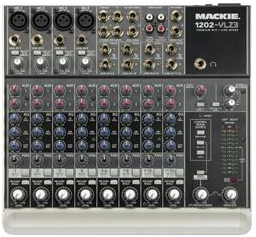
Should you have a recording mixer as part of your home studio? I say no. I know, I know. You experienced recording folks are going to say “why shouldn’t I have a mixer as part of my home studio?” Well as with most things, the idea of a recording mixer is one of those “it depends” type of situations.
If you truly understand all the routing (gozintas and gozouttas, as I’ve heard them described), then using a mixer as part of your home studio CAN be useful. I use one to receive inputs from several sources (computer sound card, two different audio interfaces, etc.) and it is only for listening. My mixer, a Mackie 1202 VLZ Pro, sends nothing out except a signal to the speakers/headphones. Most importantly (for this type of mixer), it does NOT send any signal into the computer for recording purposes. And of course, if you’re recording a live band (straight to stereo – not doing multi-track recording), you’ll want a mixer for that.
But my general advice is this: you don’t need a mixer for a computer-based home recording studio; and trying to add one to your set-up may well cause more confusion and trouble than it’s worth. You should either be using a USB microphone plugged straight into your computer, or have an audio recording interface into which you will plug your microphones and/or instrument inputs. To hear and monitor playback, you’ll either use your computer’s speakers, headphones (preferably plugged into your interface and not your computer sound card), or monitor speakers plugged into your interface. There will be (on a vast majority of recording interface units) a volume knob to control playback.
So why am I writing this article? A reader recently sent me an e-mail asking for help with his home recording studio setup. He was using Reaper recording software (excellent choice!) on his computer, along with a mixer, a drum machine and a keyboard synthesizer, along with some mics plugged into the mixer as well. He wanted to be able to record several things simultaneously (or sequentially) onto their own tracks. But he couldn’t manage either. He said he’d record the drum machine on track one, and try to record the keyboard onto track two. But track two ended up with BOTH the drum machine and the keyboard.
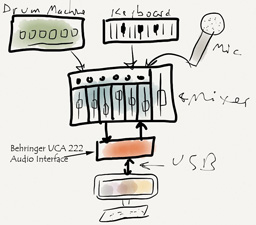 Now this can be caused by any number of things, but as soon as I saw that he had listed a mixer as part of his home studio set-up, I was pretty sure I knew the cause of his trouble. I asked him if he could tell me how he had everything plugged in. Basically it was as seen in the picture on the left (which I drew using the Paper app on my iPad – free and very cool! But I digress).
Now this can be caused by any number of things, but as soon as I saw that he had listed a mixer as part of his home studio set-up, I was pretty sure I knew the cause of his trouble. I asked him if he could tell me how he had everything plugged in. Basically it was as seen in the picture on the left (which I drew using the Paper app on my iPad – free and very cool! But I digress).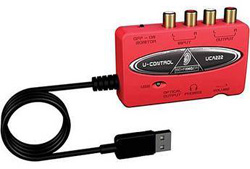
He had an audio interface, but a very limited one, called the Behringer UCA 222, which is not designed for multi-track recording, but rather for you to plug in line-level signals from things like tape decks, mixers, and other consumer audio devices, as well as electronic instruments like keyboards, drum machines, etc. There are only 2 inputs, but they are designed to accept a stereo pair (inputs are L and R) of RCA plugs. There is also a pair of outputs to connect speakers/headphones to). So you can only plug in one thing at a time. Also, and this is important, there is no preamp in the UCA222 (see our article about what a preamp is here: What Is A Mic Preamp ). That means in order to plug a microphone in, you must first plug it into the mixer to use it’s preamp, and then plug the mixer’s output into the UCA. The trouble with that is the preamps in a mixer like the 1202, though decent, are pretty cheap by necessity. There are 4 of them on a 1202, and if they used top-notch recording quality preamps, it would drive up the cost of the mixer by a lot. The 1202 is mainly designed for live sound, not recording.
So the thought process goes like this. I only have a pair of stereo inputs on this interface (UCA222). But I also have a mixer that has lots of inputs! I can plug everything into the mixer and then just take the main mixer outputs (left and right) and plug those into the UCA222). Then I’ll plug the outputs from the UCA back into the mixer, and hook up my speakers to the mixer as well.
There is a major flaw in this set-up though if you want to do multi-track recording (have each instrument/sound be on its own track). Raise your hand if you see the problem. Exactly! Everything, including the playback, is going into the mixer, which is perfectly designed to – well – mix. [end of part 1 of this article. See part 2 here].